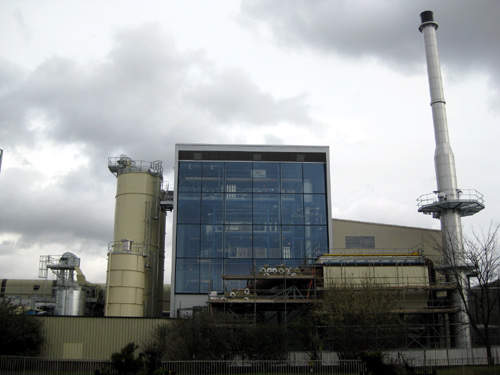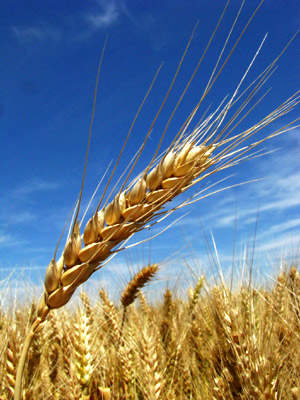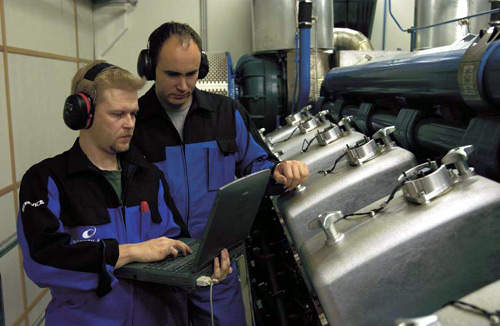Wartsila's two biomass-fuelled combined heat and power (CHP) BioPower 5 CEX plants were commissioned in May 2009 at the premises of its Manchester and Tadcaster facilities. The EPC contracts for the first and the second plant were awarded to Wartsila in the fourth quarter of 2007 and the first quarter of 2008 respectively.
The plants will utilise spent grain from S&N's breweries and wood chips from local sources to produce a thermal output of 7.4MWth and an electrical output of 3.1MWe. The electrical output in condensing operation will be 4.7MWe.
project represents the world's first power plants to produce high-efficiency electricity and heat using spent grain as fuel. In addition to meeting the energy needs of the breweries, these plants will help meet 10% of the UK's electricity supply by 2010.
The plants will produce steam electricity for breweries' processes and export the excess electricity to the local electricity network under the green and renewable scheme.
With the power plants, S&N will be able to make more efficient use of residue from its beer production and reduce energy and waste handling costs as well as CO2 emissions.
S&N will also earn Renewable Obligation Certificates for these two plants.
Project details
The power plants use MWPower rotating conical grate firing and water steam rankine cycle with naturally circulating drum boiler. A steam turbine from Indian firm Triveni is used to convert the steam to electricity.
The combination of the combustion chamber and boiler is a natural circulation flow system built from membrane walls. These walls have refractory insulations on the furnace walls and a steam drum above the boiler roof.
The convection evaporator, super-heaters and economiser are located downward in the flue gas draft. Feed water is pumped from the tank to the steam drum through a fin tube economiser. Superheated steam produced by the steam boiler flows to the turbine. The steam expands here and rotates the turbine and generator, which are connected to the same shaft.
Technology
The plants utilise the patented Wartsila BioGrate combustion technology to burn biofuels with high efficiency and low NOx and CO emissions. The plants are highly modular, use standardised components and have a conservative design approach.
Delivery and installation of these plants is therefore be carried out quickly. Since they are highly automated, they also enable unmanned operation.
Process
Spent grain is a by-product of the brewery process and consists of cellulose and other residual compounds, which are not converted to fermentable sugars during the mashing process.
Since fertilisers are used while growing the grains, the spent grain is enriched with fertilising compounds. Some of these compounds are water soluble and partly solute in waste water during processing.
Spent grain was earlier dumped or used as animal feed before its applications for energy production were discovered. Spent grain is mixed with wood chips in a 50:50 ratio to make it usable.
Following the brewing process the spent grain has a moisture content of 80% which can be reduced to 58–60% by pressing with a specially designed belt press. The moisture content in spent grain remains constant even after pressing; the content in wood chips, however, depends on weather conditions.
Grain materials are known to contain difficult combustion properties. Compounds volatising from the grate and flowing in the flue gases onto the heat transfer surfaces of the boiler may cause fouling and slagging. This might eventually lead to corrosion.
To address these challenges Wartsila conducted extensive research to gain detailed knowledge on the process of dimensioning. The research included laboratory studies at VTT Technical Research Centre in Finland as well as container tests at Scottish & Newcastle’s brewery in Manchester.
Dimensioning is done with 55% as reference moisture. The combustion temperature and the maximum flow of flue gas limit the range of permissible moisture content and the heating value.
A maximum limit of 65% is set for fuel moisture in practice but boiler steam capacity starts to decrease when the fuel moisture increases above 55%. Low temperature and flue gas fan capacity also act as limiting factors. Spent grain is brought to the plant by conveyors and wood chips are transported to the site through trucks.
Environmental impact and biomass benefits
Spent grain contains high levels of nitrogen and sulphur when compared to wood-based biomass. Reduction in NOx emissions can be achieved by using NH3 containing an additive injection SNCR, in the combustion chamber.
The NOx reduction rate, however, is dependent on the combustion rate, the reaction time and the mixing of the additive into the flowing gas. The rate of reduction can be optimal if the plant is running at constant capacity. However, if the boiler capacity or fuel properties fluctuate, reduction in emissions may vary between 20% and 60%.
To reduce dust emissions a fabric filter is used for high dust separation efficiency. This in turn increases the power needed for the flue gas fan.
The two biomass-fuelled power plants will protect S&N from volatility of the energy markets. They will also offer an additional source of electricity supply. Excess electricity generated from the plants would be fed back to the local electricity network.





